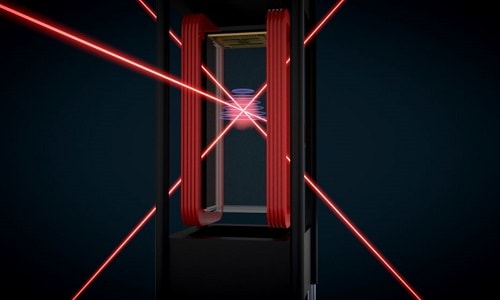NASA creates a cold spot 10 billion times the vacuum of space
The device just brought to the ISS by NASA will create a cold spot 100 million times colder than space using lasers and magnetic force.
|
CAL will create a cold spot near absolute zero on the ISS. Photo:NASA. |
Scientists will create temperatures 10 billion times colder than a vacuum to focus on the strange quantum behavior of atoms when they launch the Cold Atom Laboratory (CAL) to the International Space Station (ISS) yesterday, according toFox News. CAL is an icebox-sized physics research facility designed and built by NASA's Jet Propulsion Laboratory (JPL) in California, USA.
CAL will use lasers and magnets on the ISS to cool the atom clouds to super-cold temperatures close to absolute zero (about -273.15 degrees Celsius). Yesterday's cargo mission to the ISS carried several experimental instruments, including CAL. Researchers can conduct experiments remotely with CAL without any help from astronauts for 6.5 hours a day, according to NASA.
Known as Bose-Einstein condensates (BECs), these ultracold atomic clouds contain atoms so cold that they move incredibly slowly. Under Earth's gravity, atoms in BECs move so fast that physicists can't observe them for more than a fraction of a second, giving them little chance to study their quantum properties.
But things are different in the microgravity environment of the ISS. Free from Earth’s gravity, the speed of atoms can be slowed by lasers and magnetic forces in an ice chest-like chamber. The lasers slow the atoms down, cooling them “to just above absolute zero,” says Robert Shotwell, CAL project manager and engineer at JPL.
Using CAL to study quantum activity, physicists can better understand the behavior of atoms at extreme temperatures, a central topic in physics for more than 100 years. After cooling atoms, CAL automatically lures them into weak magnetic traps for study. While the atoms are immobilized, the team can observe them in a range of quantum states and interactions. At these extreme temperatures, researchers can examine BECs for up to 10 seconds.
"Studying ultracold atoms could change our understanding of matter and the fundamental nature of gravity," said Robert Thompson, project scientist at JPL. "The experiments we will do with CAL will give us insight into gravity and dark energy, two of the most pervasive forces in the universe."


